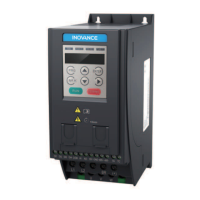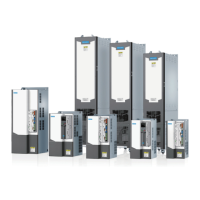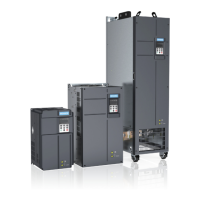Mechanical Installation (T1 to T9 Models)
‑72‑
Note
Observe the ventilation direction when installing the fan to ensure smooth discharge of hot
air. Failure to comply may cause failure in hot air exhaust, and over‑temperature or damage
to the AC drive.
Ensure a distance of at least 200 mm between the air exhaust top cover and the fan outlet
to avoid adverse effect on the cooling performance of the fan.
4.3 Installation Precautions
● Before installation, ensure that the mounting position has sufficient mechanical
strength to bear the weight of the AC drive.
● Cover the top of the AC drive with cloth or paper during installation to prevent
metal cuttings, oil, and water from entering during drilling. Foreign objects
entering may cause malfunction of the AC drive. Remove the cloth or paper after
the installation is completed. Failure to comply may degrade ventilation and result
in unexpected heat.
● Reserve sufficient clearance for heat dissipation, including the heat dissipation of
other equipment in the cabinet. For details, see "Installing one alone" in "
1.2.2
Clearances
"
on page 17
.
● Keep the equipment upright to help dissipate heat upward. To install multiple AC
drives in one cabinet, arrange them side by side. Where up and down arrangement
is required, install an air guide plate in between. For details, see "Installing one
above another" in "
1.2.2 Clearances
"
on page 17
.
● Use a mounting bracket that is flame retardant, where appropriate.
● For environments with metal dust, use a cabinet that can completely enclose the
AC drive to isolate the AC drive from metal dust. In this case, as much space as
possible should be provided in the fully sealed cabinet, and it is recommended
that the radiator be installed outside the cabinet.
● Tighten all screws using the specified torque. Failure to comply may result in
electric shock or fire.
● Keep combustible and explosive materials away from the AC drive.
4.4 Backplate Mounting
In this mode, avoid fastening only the two retaining nuts on the top of the AC drive
lest the joints come loose or damaged after long‑time operation due to the action of
unbalanced force.

